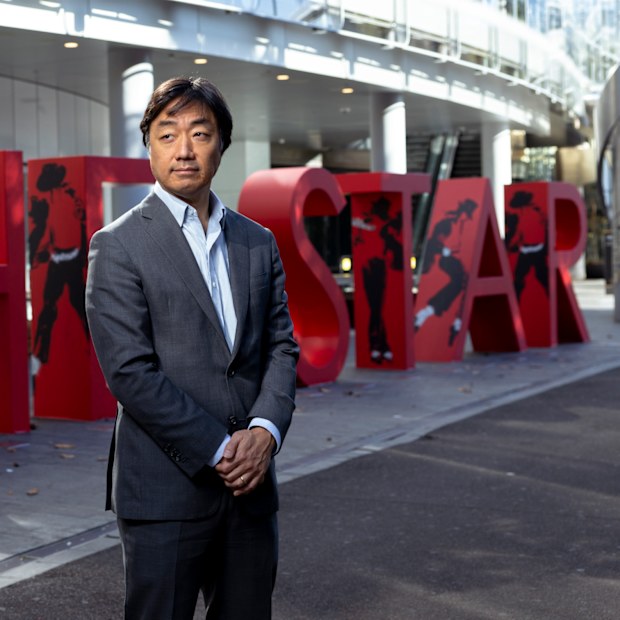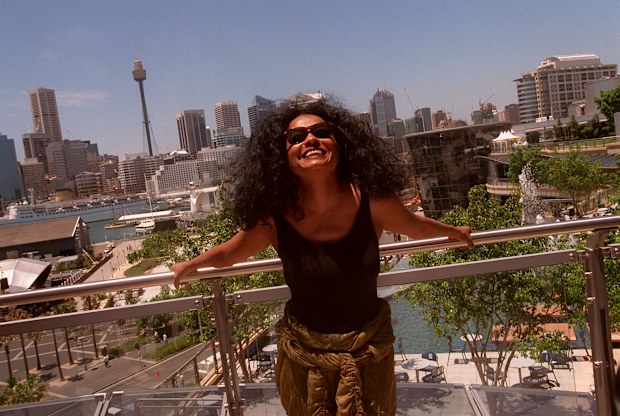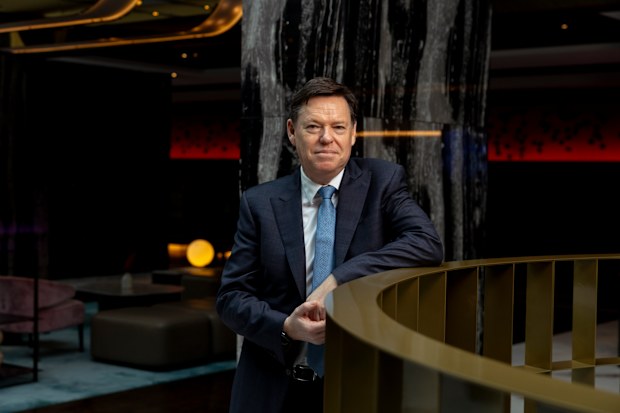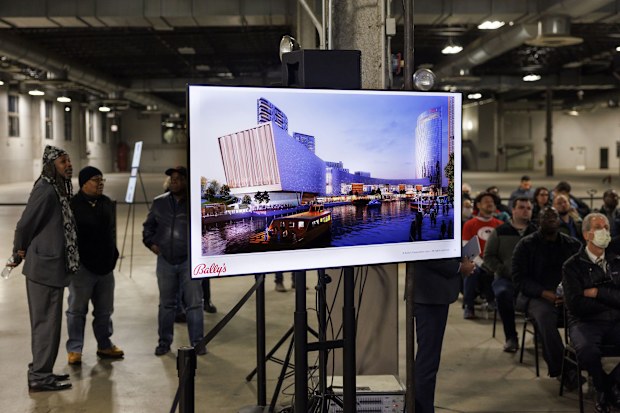Has Bally’s met its match in an impossible Star turnaround task?
The American giant has turned around plenty of casinos in the past. Now it is turning its attention to tackling its most daunting challenge yet.
Bally’s chairman Soo Kim outside the Star’s Sydney casino last week. Dominic Lorrimer
Apr 21, 2025 – 8.00pmListen to this article11 minA blisteringly hot November evening. Diana Ross, Tom Jones, Human Nature. A quarter-tonne of lobster, fireworks, stuntmen. It was 1997, and the opening of Star City, Sydney’s first casino, a complex described by The Age as “Las Vegas meets Miami with dollops of the Australian outback, the Great Barrier Reef, Luna Park, and kitsch thrown in”.
Almost three decades later, Star is under new ownership and preparing for a hard reset. It has been a turbulent history. First the COVID-19 pandemic, then a high-profile investigation that found the casino was rife with money laundering and criminal organisations, have left it adrift. The high rollers are gone, management has turned over twice, and the casino’s owner, Star Entertainment, has all but handed itself over to an American operator that it had repeatedly spurned before running out of money.
Now the question is how Bally’s Corporation, which will find itself holding about 56 per cent of Star if a $300 million rescue deal is approved by regulators and shareholders, will turn around the struggling casino. Star chairwoman Anne Ward was reluctant to accept Bally’s offer, people with knowledge of the discussions say, for precisely these reasons. How successful has Bally’s been in the past? Does it even have the money?
Diana Ross at the opening of Star City in Pyrmont, 1997. The Sydney Morning Herald
It will not be an easy resuscitation. Star owns casinos on the Gold Coast and Brisbane, but it is Sydney that is its flagship, and most lucrative. Bally’s will not only need the financing, but the prowess to attract new customers to a flagging asset that has seen revenues slump year after year.
In the longer term, it will need to convince the state government to change the law and help it compete with suburban pokie dens – which do not have strict rules on how customers gamble – that have stolen its business.
So far, it has been Soo Kim, the founder of New York hedge fund Standard General, which owns Bally’s, who has been the name and face of the push on Star. But it will be George Papanier, Bally’s president and a long-time casino executive, who will have to actually come up with a plan. Papanier says most of the information Bally’s has had access to about Star was publicly available. It will take time to put together a turnaround plan.
“I think they have not done a good job on turning around quickly enough, so there’s an opportunity there,” he says of Star’s current management.
The figures are not promising. Many of the reasons have little to do with Star’s newish chief executive, former Crown Resorts and Lendlease boss Steve McCann, who officially started in the job only in December.
In 2018, for instance, more than 30 per cent of total revenues, or $711.5 million, came from international high-roller programs. Just before the pandemic, Star’s Sydney casino alone had half-year revenues of $699 million and earnings before interest and tax of $132 million. Last week, Star disclosed half-year revenues at its Sydney casino of $362.2 million. It made a $42.7 million loss, underlining how difficult a turnaround it will be.
Then there are the known unknowns. The financial crimes agency, Austrac, will levy a penalty for breaches of money-laundering laws. There are also plenty of restrictions to come including cash limits in Sydney and mandatory carded gaming in Queensland (it is already in place in NSW).
Star’s half-year financial accounts, lodged last week, include an alarming going-concern notice outlining 13 things that could send the company broke.
Papanier has already seen the impact of the restrictions put in place at Star’s Sydney casino. There are the usual identity checks, then a requirement to preload cards to pay for gambling. There are extensive requirements on the casino to know its customers, including a due-diligence process on big spenders which force them to disclose details of their wealth.
“You can have the greatest facility in the world, but if you treat them bad, they’re not coming back,” Papanier says in an interview, having watched customers go through the process when he visited Star’s Sydney complex earlier this year. Some customers just don’t want to hand over those details, he adds. At Bally’s casinos in the United States, half the customers turn down the free games, meals and other rewards which come if they sign up for carded play, which, unlike in Sydney, is not mandatory.
These rules do not apply to pubs and clubs that also operate poker machines, making it easy for punters to flee to other venues. While Star Sydney’s gaming revenue fell 8 per cent last quarter, the nearby Pyrmont Bridge Hotel, with 19 poker machines only 400 metres from the casino, jumped 100 places on the state ranking by gaming machine profit.
“Any international visitors wanting to come and play at Star right now have to show proof of funds,” says Ben Lee, managing partner of IGamiX, a Macau-based consulting firm which specialises in casinos. “I know of potential players who have balked at coming to Australia.”
Lee says the rules have particularly hurt Star, over Crown, which has focused in Sydney on attracting a smaller number of wealthier gamblers. “The slot machine is a significant part of Star’s business, and is the key competitive advantage against Crown Barangaroo. Without that revenue stream, it will be a very uphill challenge for them to return to profitability,” he says.
McCann and Crown chief executive David Tsai have both argued that the state needs to rethink its approach to regulation if it wants casinos to survive. Speaking to investors last week, McCann said that Star’s market share of poker machines in NSW and Queensland was declining.
“It’s very clear that customers who are no longer gaming at Star are continuing to game elsewhere,” he said on a call at the time. “If we were to regain a material proportion of … market share, we will be able to restore our revenue to profitable levels relatively quickly.”
Star Entertainment CEO Steve McCann knows regulatory change is key to profitability. Dominic Lorrimer
Lee, however, says that even if some of the most onerous restrictions, such as the need for detailed due diligence, are eased, Star will never attract the number of international patrons it once did. Its biggest market was in China, and Lee says it is increasingly difficult for residents to leave the country if authorities suspect they have heading overseas to gamble. “China is deliberately restricting the people they know to be frequent gamblers overseas from travelling overseas or to certain destinations,” he says.
Papanier says he has no problem with being regulated, but is already arguing that the rules that apply to casinos should apply to pubs up the road.
That would put Bally’s biggest local supporters, the Mathieson family, in a difficult position. The Mathiesons are currently Star’s largest shareholder – but also have a big stake of Endeavour. Endeavour runs hundreds of pubs, and would be harmed if subjected to the same rules as Star.
Bruce Mathieson jnr, whose family is investing another $100 million in Star as part of the rescue deal with Bally’s, says having an equal playing field between casinos and pubs is fair enough “at some point”.
“You have to earn your right to have a level playing field,” he tells The Australian Financial Review, a reference to Star’s long list of failings on anti-money-laundering rules in both Sydney and Queensland.
Changing the rules won’t happen any time soon – and that means Bally’s and Papanier need to think of something else to turn around Star’s fortunes. McCann has already started cutting costs – taking out $100 million in annualised expenses, with plenty more likely to go.
“Taking costs out is the quickest, easiest way to transform the business – something they can attack directly because increasing the revenue is going to be a different proposition,” says Lee. Plans announced by McCann to rework restaurants and bars in Sydney, he adds, will not drive enough new revenue to really help turn the casino’s finances around.
Part of Star’s struggle, according to Lee, is that it is stuck between appealing to the masses and the top end of town. The most successful casino operators, such as Sands Resorts and Wynn Resorts, operate in a single area.
“Sands focused on the grand mass – they wanted volume, they wanted economies of scale and got it,” he says. “Wynn [founder Steve Wynn] wanted people who were willing to pay for a very elegant level of service. And he got that. Star is in the middle … caught between the local pokies and Crown at the top end.”
Papanier says it is too early to know for sure how his company will try to turn around Star. But he says it has acquired and turned around more than a dozen casinos, typically doubling earnings within two to four years. He says all of Bally’s sites are profitable – and expects Star to be no different.
Bally’s was originally a prominent hospitality brand in the 1970s and 1980s, owning Six Flags theme parks and even a video-gaming business behind arcade hits such as Space Invaders and Pac-Man. In 1996, it was acquired by Hilton and spun out the casino business. Standard General, Kim’s hedge fund, acquired the rights to the name from Caesars Entertainment in 2020, having already purchased the Twin River Casino Hotel in Rhode Island.
Bally’s proposed Chicago casino will open at the end of next year at a cost of $US2 billion. Getty
It now runs 19 casinos, has proposed a giant new complex on the site of the Tropicana Las Vegas, and is building a massive casino in Chicago at a cost of $US2 billion ($3 billion) which is due to open late next year.
Bally’s casinos range from 1000 seats as Papanier describes it – a count of poker machines and seats at gaming tables – to 5000.
Papanier thinks about Star’s Sydney site like one of Bally’s regional casinos, expecting it will need to make 80 per cent to 90 per cent of its revenue on gaming. The Gold Coast, he says, is more of a holiday destination, and income could be more evenly split between gaming and hospitality.
The new Queen’s Wharf project in Brisbane, which is currently 50 per cent owned by Star, is up in the air. Star has a deal to sell the group to its joint venture, necessitated by the ongoing capital commitments (estimated to be worth more than $200 million this year alone) and an upcoming refinancing that could require Star to inject hundreds of millions of dollars. Star is seeking to finalise that transaction, McCann said last week.
Papanier says Bally’s secret sauce is marketing and customer experience, and service, and algorithms based on customer profiles that encourage them to visit. He says Bally’s would typically have between 50 per cent and 85 per cent of customers in its database. “About 10 per cent of our customers drive 60 per cent of our business,” he says. “So we are really focused on that 10 per cent – and they get a little bit of a different treatment.”
Papanier says Bally’s typically tries to turn around its casinos quickly and will sometimes “relaunch” them to win back customers and turn around sentiment, hinting that Sydney may get its second Diana Ross moment.
- Forums
- ASX - By Stock
- SGR
- Has Bally’s met its match in an impossible Star turnaround task?
SGR
the star entertainment group limited
Add to My Watchlist
4.76%
 !
10.0¢
!
10.0¢
Has Bally’s met its match in an impossible Star turnaround task?
Featured News
Add to My Watchlist
What is My Watchlist?
A personalised tool to help users track selected stocks. Delivering real-time notifications on price updates, announcements, and performance stats on each to help make informed investment decisions.
 (20min delay) (20min delay)
|
|||||
|
Last
10.0¢ |
Change
-0.005(4.76%) |
Mkt cap ! $286.8M | |||
| Open | High | Low | Value | Volume |
| 10.5¢ | 10.8¢ | 10.0¢ | $466.4K | 4.498M |
Buyers (Bids)
| No. | Vol. | Price($) |
|---|---|---|
| 57 | 5181591 | 10.0¢ |
Sellers (Offers)
| Price($) | Vol. | No. |
|---|---|---|
| 10.5¢ | 191896 | 3 |
View Market Depth
| No. | Vol. | Price($) |
|---|---|---|
| 53 | 5134591 | 0.100 |
| 4 | 154009 | 0.099 |
| 4 | 140040 | 0.098 |
| 3 | 45656 | 0.097 |
| 3 | 112580 | 0.096 |
| Price($) | Vol. | No. |
|---|---|---|
| 0.110 | 5971164 | 45 |
| 0.115 | 2583307 | 29 |
| 0.120 | 2222475 | 44 |
| 0.125 | 1150638 | 22 |
| 0.130 | 1104993 | 17 |
| Last trade - 16.10pm 05/09/2025 (20 minute delay) ? |
Featured News
| SGR (ASX) Chart |
The Watchlist
PSC
PROSPECT RESOURCES LIMITED
Sam Hosack, MD & CEO
Sam Hosack
MD & CEO
SPONSORED BY The Market Online













